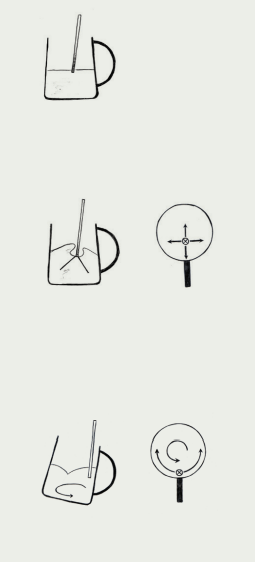As any well-established coffee shop will know, the majority of their income is based around the sales of “milk” drinks such as cappuccino, latte or flat-white so it pays to get them right.
What are the best types of milk to froth? (Make cappuccinos)
- Non-fat or skimmed milk provides the largest foam bubbles and is the easiest to froth for beginners. Since there is no fat in the milk, the result is light and airy but the flavor is not as rich as other types of milk.
- 2% milk will also foam effortlessly as well as add a more creamy taste than non-fat milk.
- Whole milk is more challenging to achieve perfect froth as the fat in the milk weighs down the foam, however this produces the most decadent, rich tasting cappuccino. Practice incorporating the right amount of steam into the milk to produce an authentic micro foam cappuccino.
- Other types of milk such as soy will froth, but will lose the bubbles quickly as the protein structures of these types of milk cannot fully support the milk bubbles.
- Organic and lactose free milk do not froth as well as other types of milk. This has to do with the pasteurization process of these milks.
What are the best types of milk to steam? (Make lattes)
- Non-fat milk, 2% milk, whole milk, organic milk and lactose free milk will provide excellent results for your latte.
- Soy milk, almond milk, rice milk and coconut milk can also be heated for a dairy free latte alternative.
What is the optimal temperature for steaming and frothing milk?
- Milk proteins will start to break down and burn around 170°F.
- The ideal temperature for steaming milk on a home espresso machine is between 150°F – 155°F.
- Most cafés serve coffee beverages between 155°F – 165°F.
- 160°F is the ideal temperature for a drink that will be taken to-go.
- Always pre-heat your latte and cappuccino cups to ensure the milk maintains proper temperature.
- Different types of milk have different burning points. Soy milk will burn before whole milk will. Practice frothing your favorite milk to find out the best temperature for your taste.
Why do certain types of milk froth better than others?
- The key factor in achieving good froth is using fresh, cold milk.
- Fresh milk should be consumed within 10 days of purchase and if using the milk for frothing, use within 5 days of purchase to get the best foam.
- Milk should be very cold. Use milk that has been taken directly from the refrigerator and start frothing immediately.
- Organic and lactose free milks are ultra-pasteurized and therefore the proteins in the milk are destroyed and do not support the milk bubbles in the foam. Do not use these types of milk when trying to achieve a thick froth; these milks work better for lattes.
- Milk should be kept away from light. It is better to buy milk in opaque containers rather than clear containers.
- Do not leave milk on the counter after use as this can affect the freshness of the milk. Always put milk back into refrigerator when done using.
- Always wash your milk container after use. NEVER re-steam milk once it has been heated. Only steam the amount of milk you are going to use.
- Never add fresh milk to milk that has already been steamed as bacteria can grow.
- Never pour hot milk over ice as bacteria can grow.
The science of frothing milk:
- Proteins and fats in milk are responsible for how well the milk with be frothed.
- The act of steaming milk is essentially forcing air into the milk while increasing the milk’s temperature.
- The protein in the milk is what stabilizes the entrapped air and forms bubbles and froth.
- If the milk has too much fat, the protein cannot support the bubbles and the froth will be flat.
- Fresh milk isn’t always consistent and has many other factors that can alter the taste such as: what the cow has been fed, type of cow, the pasteurization process, how the milk was stored before it was purchased, etc. All these factors attribute to the variation of fresh milk and its ability to consistently produce froth.
- If your milk is not frothing the way you like, please try another type of milk as described above.
STEPS TO FOAM & TEXTURE

COLD MILK
Position the wand just below surface
FOAMING/SURFING
Allow steam tip to break surface. Lower jug to maintain “chirping” as milk volume increases 40°c (cappuccino) or sooner (latte/flat white) – switch to…
TEXTURING
Wand 2-3cm deep on side of jug. Stop at 60°c. 65-70°c max temperature – proteins denature. “Eggy” cooked smell and “dry” texture


